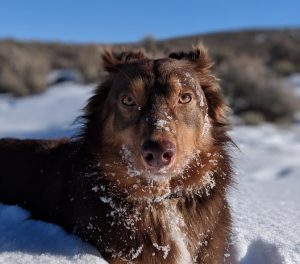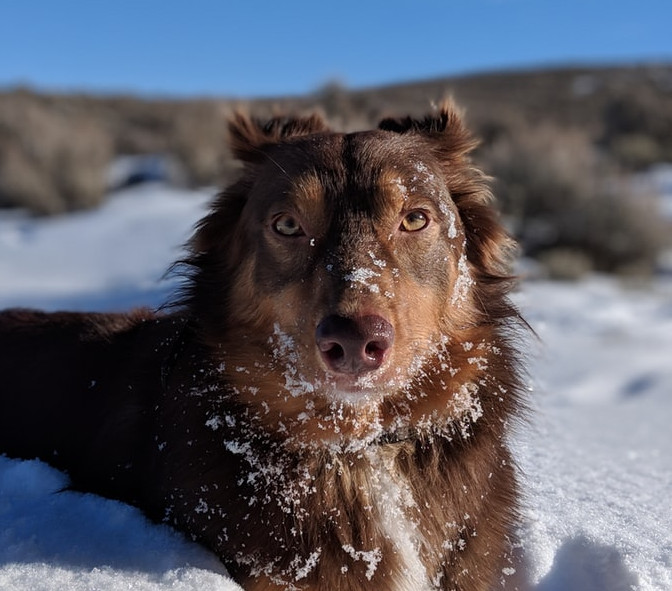 This November, Mother Nature has shown us a pretty wide spectrum of wild weather. From warm and sunny to damp and cold, we have experienced a little bit of everything. While having a few warmer days here and there are certainly most welcome, temperatures will inevitably continue to drop as we head towards winter.
This November, Mother Nature has shown us a pretty wide spectrum of wild weather. From warm and sunny to damp and cold, we have experienced a little bit of everything. While having a few warmer days here and there are certainly most welcome, temperatures will inevitably continue to drop as we head towards winter.
On a personal note, winter is my favourite season. The cold, crisp air feels refreshing in my lungs, and there is no better feeling than hiking for hours along a freshly snow covered trail.
With that said, the winter months can be very hard on our pets at times. Many dogs do not have a thick, insulating undercoat to protect them from the cold. Additionally, certain dogs have sensitive paws, and may react poorly to salt and other de-icing agents used on roads and sidewalks. These are all important factors to take into consideration before we expose our pets to the winter elements.
There are many things we can do to keep our pets protected throughout the winter – all it takes is a little preparation ahead of time.
Keep warm and stay warm
When temperatures drop, pets should not be left outside for extended periods of time. Short-coated dogs are particularly vulnerable in cold temperatures and will greatly benefit from a coat or sweater. The best winter garments for dogs are those with a waterproof outer shell and a well-made insulating layer. Many dogs take to wearing coats very quickly, however others may need a little bit of time to adjust.
Many pets require regular grooming year round, including winter. Longer, thick coats provide excellent insulation, so give that some thought before having your dog shaved. Your groomer will be able to provide advice that will keep your pets looking their best and warm at the same time. Additionally, when bathing your dog at home during winter months, ensure he is completely dry before taking him outside.
Puppies are generally less tolerant of cold weather than adult dogs, so when house training your puppy during winter months, consider putting a simple jacket or sweater on him when he goes outside to do his business.
Avoiding car hazards
Never leave pets unattended in a vehicle during cold weather, as temperatures inside vehicles can reach freezing very quickly. Also, be aware of cats and kittens seeking warmth under vehicle hoods. When the vehicle motor is started, a cat can be injured or killed by the engine’s moving parts. Make a point of knocking on the hood or sounding the horn before starting the engine. This will warn away any cats or kittens which may be hiding in your vehicle.
Remote vehicle starters are a wonderful luxury, however consider using this feature when you are certain there are no animals hiding inside the engine compartment.
Protection for outdoor dogs
Many breeds of dog are perfectly suited for spending long periods of time in cold, inclement weather: Great Pyrenese, Alaskan Malamutes, Huskies, Bernese Mountain Dogs, St. Bernards, and more. However, just because a dog is large and well insulated against cold climates doesn’t mean they don’t require any special attention.
Outdoor dogs and puppies must be provided adequate shelter and a constant supply of fresh water. While the Ontario SPCA strongly recommends bringing your dog and puppy indoors, dogs that live primarily outside require at minimum a dry, draft-free doghouse soundly built of weatherproof materials with the door facing away from prevailing winds. It must be elevated and insulated, with a door flap and bedding of straw or wood shavings. To provide extra warmth in the dog house, consider placing a pet-specific electric heating pad underneath their bed – your dog will thank you!
Check your outdoor pet’s water frequently to ensure it hasn’t frozen. Use a tip-resistant plastic or ceramic bowl, rather than metal, to prevent your dog’s tongue sticking to the cold metal surface. If the water gets too cold and keeps freezing, then it may be time to upgrade to a plug-in outdoor dog bowl. These specialty bowls are designed to keep water cold, but maintain just enough warmth to not freeze.
Simple pet precautions
Winter can be a very messy time for many dogs. Salt and other chemicals used to melt snow and ice on roads and sidewalks can irritate and burn your pet’s sensitive paws – and may cause injury or illness if ingested. Use a damp towel to thoroughly wipe your pet’s paws and underside after returning from a walk. Dirty Dog Mats are very popular for this purpose as their super absorbent material easily removes moisture and debris from the skin and coat.
Accumulation of ice balls is a big problem for certain coat types (hello poodles!). As snow and ice build up on the legs and belly, they form into large, dense, heavy clumps. This can be quite uncomfortable, even painful, for dogs as they will chew and lick these areas in an attempt to remove the clumps. To remove ice balls, place your pet’s feet in warm (not hot) water before drying them off with a towel.
For complete foot protection from salt, ice, and cold temperatures, consider using a simple set of insulated dog boots.
With the right precautions, winter can be a safe and enjoyable season for both pets and people alike.
Brandon Forder, known as The Pet Expert, is vice-president of Canadian Pet Connection, an industry leader in healthy pet lifestyles. Brandon holds multiple certifications in pet nutrition, and has more than twenty-five years’ experience specializing in pet health and behaviour. He has written hundreds of informative pet-related articles for newspapers, magazines, radio, and the popular Ask the Pet Expert Blog. Brandon is highly skilled in pet problem solving, and enjoys teaching others about smart and responsible pet ownership. To learn more, visit www.CanadianPetConnection.ca.












